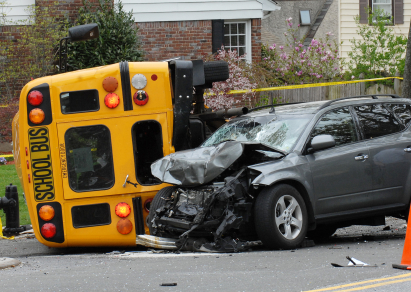When To Drop Collision Insurance
Consider your lienholder and personal financial situation before dropping collision coverage
Collision insurance covers damage to your vehicle when you are in an at-fault accident – so it can be a big chunk on your insurance bill.
Dropping collision coverage on your vehicle can often be appealing. After all, it’s probable the single most significant thing you can do to lower your auto insurance rates.
It’s no wonder people think about when to drop collision insurance – part of full-coverage insurance. But as with anything else, actions have consequences. Bear a few things in mind before dropping collision.
Don’t Drop It Until Your Car is Paid Off
Perhaps a better question is when NOT to drop collision insurance. The answer is if you’re still making car payments. Virtually all banks and other creditors on car payments – aka “lienholders” – require full coverage to protect their investment.
As the policyholder you have the right to drop your full coverage at any time. But if the lienholder finds out (and they will – the insurance company is required to inform them), they will “force place” collision coverage on the vehicle and then bill you for it.
No matter how expensive your full coverage is, the force placed insurance will be more expensive. As long as the lienholder is on your title, you are truly better off keeping your collision insurance. Adjust your deductibles if you need a price break.
Consider Lowering Deductibles Before Dropping Collision
Most lienholders require deductibles of $1,000 or less. Coincidentally, most insurance carriers offer maximum deductibles of $1,000. Higher deductibles are sometimes available on commercial policies.
If getting rid of collision insurance isn’t an option, raising your deductible can maximize cost savings. Just be sure not to raise it too high. When considering your deductible, choose the maximum amount you’re willing to spend on your vehicle in case of a mishap.
Anything lower, and you’re paying too much in insurance premium. Anything higher, and you could be stuck with paying more than you bargained for if you have an accident.
Understand the Risks of Dropping Collision
Regardless of whether you keep collision insurance, be sure to inform your insurance company to drop the lienholder as soon as you pay off your car. Otherwise this may be forgotten and cause problems later.
But once the lienholder is paid off and gone, you can consider dropping collision insurance without fear of their intervention. Just remember collision insurance protects your financial investment in your car. Without it, your car is not protected from at-fault incidents.
When considering dropping collision coverage, ask yourself one question, “If something happens to this vehicle, will I be OK with paying cash for another car?” If the answer is “yes,” then the time has come to drop collision coverage.
Trackback from your site.

